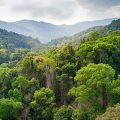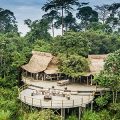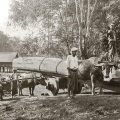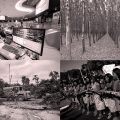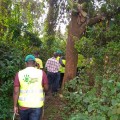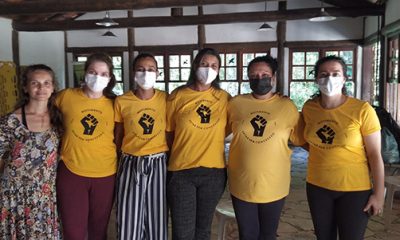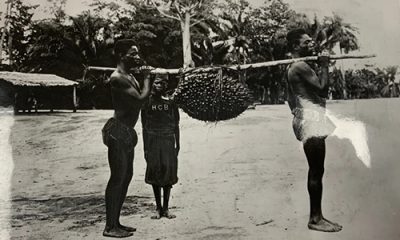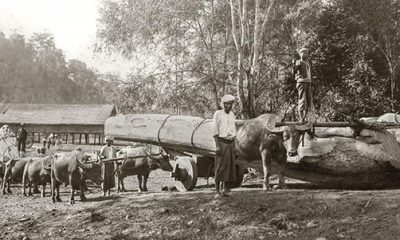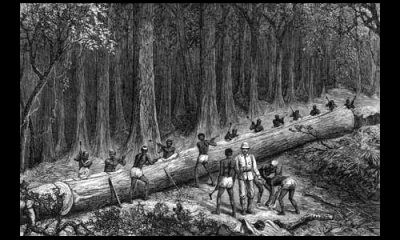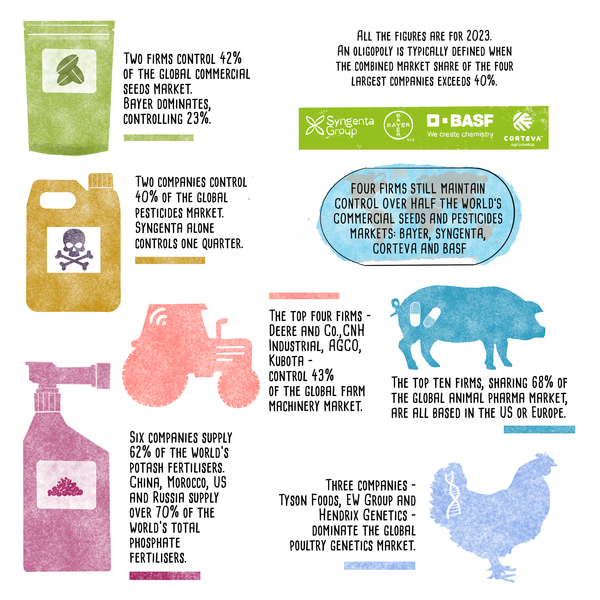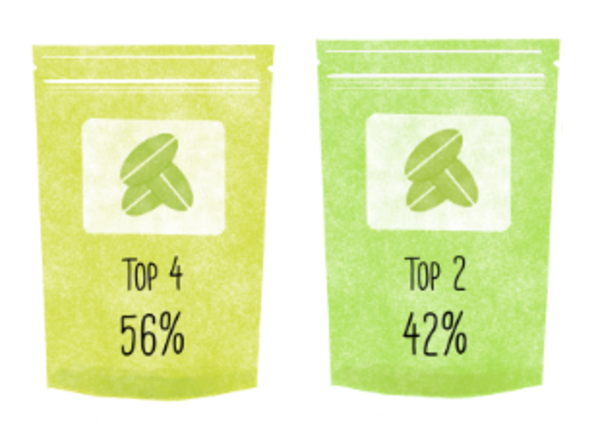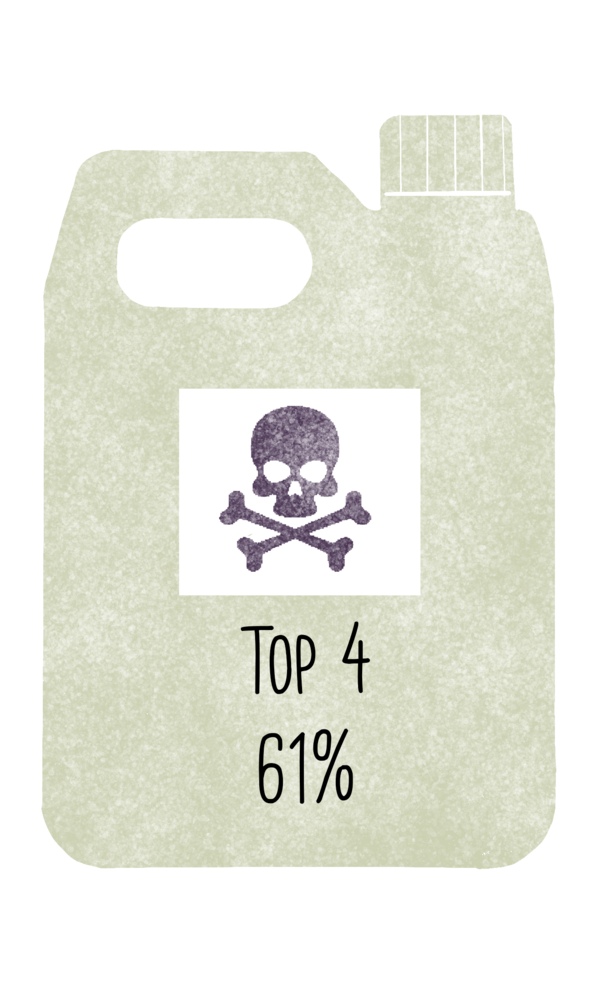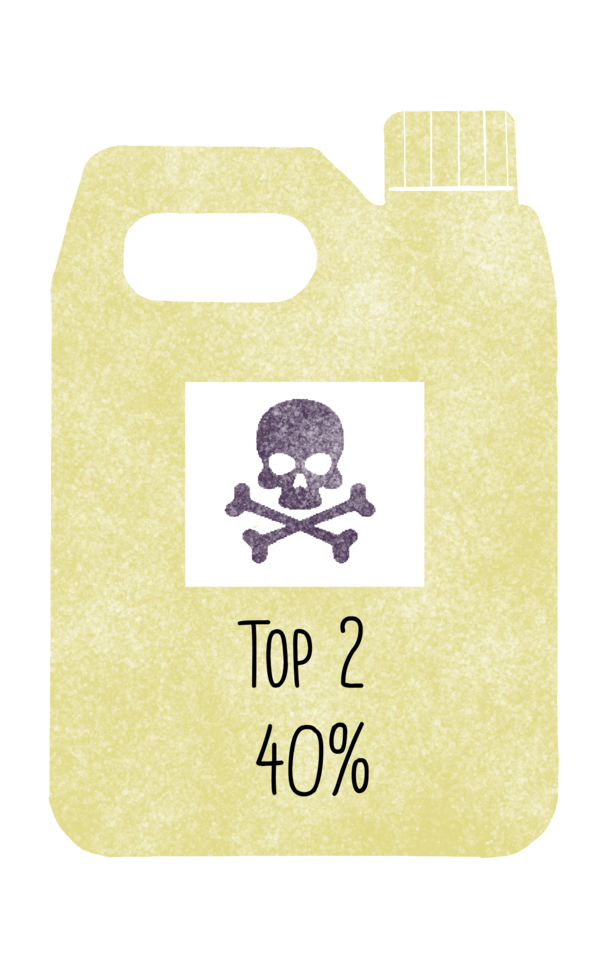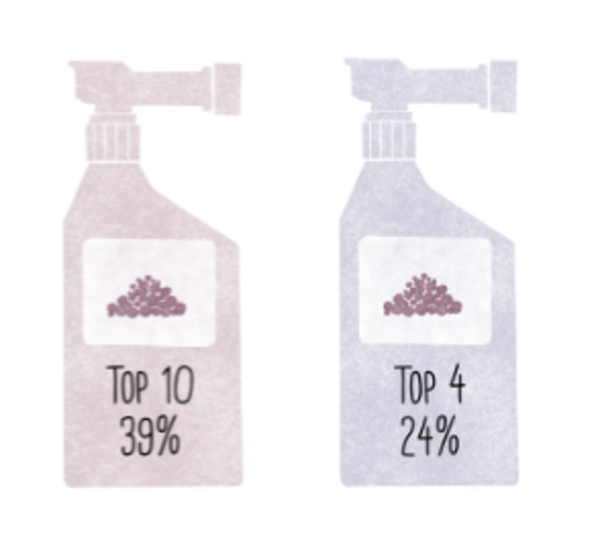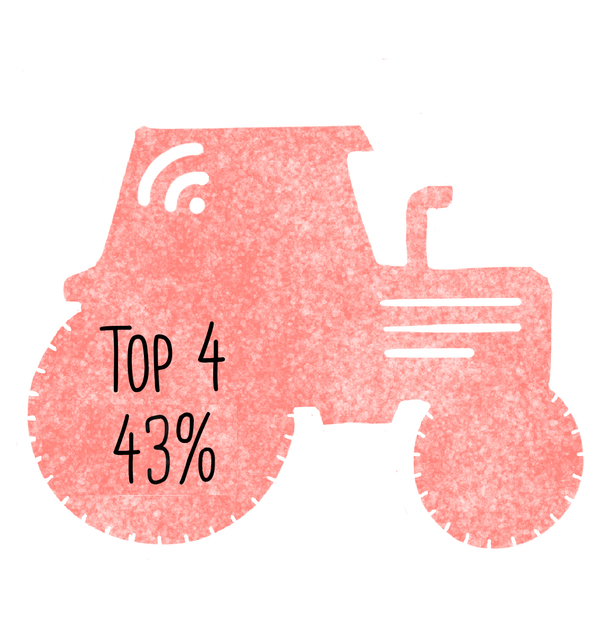SPECIAL REPORTS AND PROJECTS
Forest Concessions, Colonial Concept
Published
4 years agoon
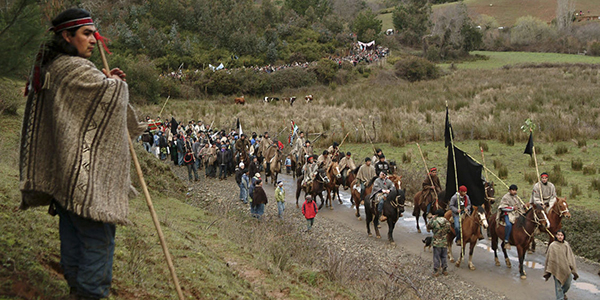
What a certain historiography terms civilizational expansion or capital’s expansion has in fact been the invasion and de-territorialization of peoples and communities using much epistemic and territorial violence. Concessions have been granted in areas that are not demographic voids, a colonial concept that ignores the fact that they have been populated for millennia.
Recently, peasant populations of the Brazilian savanah (cerrado), known as Back Communities and Pasture Fencing (Comunidades de Fundo e Fecho de Pasto), have been questioning the legal instrument of ‘concession of the real right of use’ (concessão de direito real de uso) that has been proposed by the Brazilian state to regularize the lands traditionally occupied by them. Through this instrument, the state grants for a certain period of time the right of use but retains ownership of the land. This instrument has been used in situations where the social interest, including the environmental dimension, is recognized. A specificity of the Comunidades de Fundo e Fecho de Pasto is the common use made by these populations of the land and everything else that is implied – water, fauna and flora. Often in these traditional territorial units, families have land next to their homes that only they use, but at the back (fundo) there is a common use area, where fruit or wood can be gathered, including some pasture land (pasto) where animals can graze. When such common use lands are further away from people’s homes, in non-contiguous areas, they are called fecho de pasto, but serve the same purposes as those termed fundo de pasto.
The fact that some of these communities are questioning the use of this legal instrument is noteworthy because it touches on the heart of the concept of ‘concession’, an expression that alludes “to the action or effect of granting, making available, putting at one’s disposal; consent, permission”. This questioning sets off from a condition of origin, i.e., their existence prior to the power of the state that self-attributes the power to concede. After all, the fundo or fecho de pasto communities constitute a territorial space of common use with a way of life based on customary law pre-dating the state, and not just chronologically, but also because these are traditional practices that continue to be current.
In fact, as a social group they demand the same as what international law recognizes for states as uti possidetis de iuris, the principle according to which those that in fact occupy a territory possess rights over it. Hence, they update a theoretical-political debate that indigenous peoples have been raising about their territories, whose origins pre-date the states of the current countries in which they live. These traditional peasant communities thus join indigenous peoples and the quilombola / cimarrones / pallenqueros communities, whose rights are recognized by ILO Convention 169, of 1989. This strengthens a recent trend in international law, as seen with the 2007 United Nations Declaration on the Rights of Indigenous Peoples.
In order for one to grasp how deep this process of recognition of rights is – of rights over territories already occupied –, note that one is dealing with processes not limited to these traditional peoples and populations, since all this recognition is intimately related with processes of decolonization following the end of the Second World War, chiefly in Asia and Africa (1) and furthermore, in the face of the massacre of the Jewish people in Nazi concentration camps. Since then, the rights of ethnic-racial minorities have been recognized inside states formerly considered uninational.
Recently, the indigenous peoples of America (2) took up again their protagonism, going as far as to question the exclusivity of the designation of the sub-region as “Latin America”, an expression that forgets the existence of peoples that have no Latin origin and that nowadays call the sub-region by their own name: Abya Yala (3). Bolivia and Ecuador declared themselves explicitly in their constitutions as plurinational states, in 2010 and 2008 respectively. Equally, other states recognize the rights of indigenous peoples, Afro-descendants and traditional communities to their territories even within states, thus no longer exclusively uninational.
The struggles of peoples and traditional communities call into question the colonial character in its continuity-discontinuity, given that “the end of colonialism did not mean the end of coloniality” (4). After all, the colonial way of thinking/acting and feeling – coloniality – outlived colonialism as a dated historical period. This is made clear by the permanence of the colonial concepts of ‘concession’, of ‘reservation’, of ‘guardedness’ or of ‘development’ that still persist in states and international agencies when referring to traditional populations or to concessions of forested territories. They forget that these groups/ethnicities/peoples/classes demand recognition of their territories and alternatives to development, and not development alternatives, in other words, living and coexisting well (Ubuntu, Sumaq Qamaña or Sumak Kausay) (5). These suggest other horizons of political meaning for life. And they do this by bringing to the debate an immemorial/ancestral time that calls into question the colonial time and its horizon of capital accumulation [always] in the short term.
This is not the time of our forests and of our territories inhabited since the Pleistocene, more than 19,000 years ago, as in the Chiribiquete Cultural Formation, in today’s Colombian Amazon region. How can a ‘forest concession’ be made while ignoring, for instance, the ‘tropical cultural humid forest’, as the Amazon rainforest has been termed lately? The Amazon region has some 39 billion trees grouped in 16,000 species, of which only 227 (or 1.4%) account for half of the biome’s total number of trees. Such species are known as hyperdominant. Among the hyperdominant species, there are 85 domesticated/managed populations whose dispersion and concentration were possibly influenced by human action in the past. It is known that açaí has been managed for at least the last 2,000 years, linked to areas of the Brazilian and Colombian Amazon forest where there is the formation of soils with so-called black earth, which are anthropogenic soils. The same has occurred for 11,000 years with the bacaba (Oenocaropus bacaba), the patauá (O bataua), the murumuru (Astrocaryum murumuru), the buriti (Mauritia Flexuosa), the inajá (Attalea maripa) and the tucumã (Astrocaryum aculeatum).
Classic studies show that practices grouped under the heading of ‘agro-forestry’ indicate that the hyperdominance present in the Amazon Forest was at least in part built through a process of co-evolution between indigenous peoples, plants and animals since the start of the Holocene. And not just in the Amazon. 76 families and 240 species of such plants have been identified on the basis of studies of seeds, xylems, phytoliths, starch grains and pollens preserved in sediments and archeological artifacts in Belize, Brazil, Chile, Colombia, Costa Rica, Cuba, Ecuador, the USA, Guatemala, French Guiana, Honduras, Mexico, Panama, Peru, Trinidad and Tobago, Uruguay and Venezuela.
Clearly, one is facing another paradigm, different from US/Euro-centrism, one that does not separate nature from culture or nature from society. Forests are not voids in terms of human occupation, of culture. Concessions of forest and other kinds (of lands or mining rights, for example) have been granted in areas that are not demographic voids, a colonial concept that ignores that these areas have been populated for millennia, as we have seen. For this reason, that which a certain historiography candidly terms civilizational expansion or capital’s expansion has in fact been the invasion and de-territorialization of peoples and communities using much epistemic and territorial violence (eco-cide and earth-cide).
This conflictive tension configured since 1492 in Abya Yala/America, nowadays takes on dramatic overtones with the struggle of the Peoples of Wallmapu, in the south of the continent. There, the Mapuche indigenous people has been retaking the territories that were violently seized against their concession, if you will allow me to use the term thus far used in its improper sense. New times are likely opening up, when we witness the Chilean Constituent Assembly, under the leadership of a Mapuche, propose on January 27, 2022, that the state rename itself a Plurinational and Intercultural State.
Carlos Walter Porto-Gonçalves,
Coordinator of the Laboratory for Social Movement and Territoriality Studies (LEMTO) of the Fluminense Federal University and professor of the Interdisciplinary Postgraduate Program in Human Sciences of the Federal University of Santa Catarina, Brazil.
(1) We consider that processes of independence from the former European colonial metropolises had already occurred in the Americas since 1776, in the USA, and 1804, in Haiti, followed by various other countries on this continent.
(2) We can admit that the resistance of the original peoples took place from the first moment of the process of colonial invasion/conquest. However, it is worth stressing the major rebellion that occurred in the Andean world, commanded by Tupac Amaru, Tupak Katari and Bartolina Sissa in 1781, which practically paralyzed silver production and contributed to the start of the independence processes led by the criollo elites.
(3) PORTO-GONÇALVES, Carlos Walter (2006). Abya Yala. In: SADER, Emir and Jikings, Ivana (eds.). Enciclopédia Latinoamericana. Ed. Boitempo, São Paulo and Madrid.
(4) QUIJANO, Anibal (2005), “Colonialidade do poder, eurocentrismo e América Latina”. In: Lander, E. (ed.), A colonialidade do saber: eurocentrismo e ciências sociais. Perspectivas latinoamericanas. CLACSO. Buenos Aires.
(5) Ubuntu among the Bantus in Africa, Sumaq Qamaña among the Aimaras and Sumak Kausay among the Quechuas in the Andes are concepts/cosmogonies these peoples use to designate their own ways of life, thus refusing to be identified with strongly ethnocentric concepts like development.
Original Source: World Rainforest Movement
Related posts:
-

Members of the Mapuches Indians Movement ride their horses as a Chilean Mapuche stands guard during the burial ceremony of Jaime Facundo Mendoza Collio, who was killed during clashes with riot police, near Temuco city, some 680 km (422 miles) south of Santiago, August 16, 2009. Collio, 24, died on August 12, 2009 after being shot during clashes with police in a land dispute in southern Chile, local media reported. REUTERS/Jose Luis Saavedra (CHILE POLITICS CONFLICT)

SPECIAL REPORTS AND PROJECTS
Top 10 agribusiness giants: corporate concentration in food & farming in 2025
Published
2 months agoon
August 28, 2025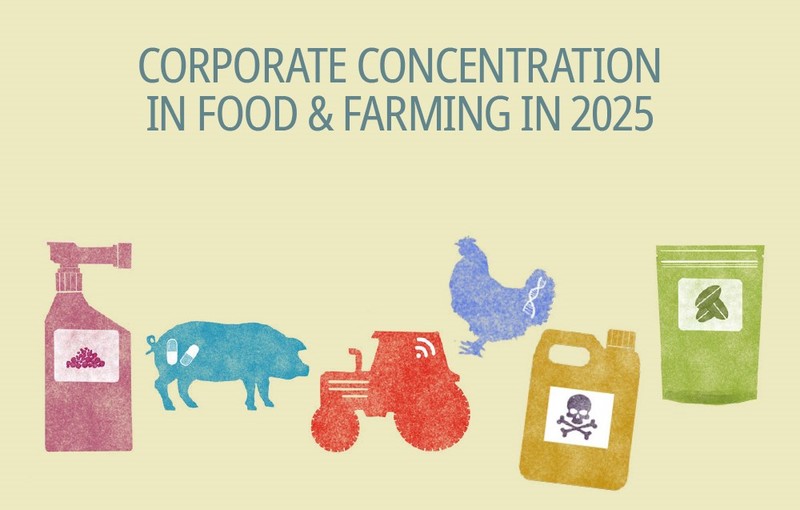

|
Ranking
|
Company (Headquarters)
|
Sales in 2023
(US$ millions)
|
% Global market share 19
|
|
1
|
Bayer (Germany)20
|
11,613
|
23
|
|
2
|
Corteva (US)21
|
9,472
|
19
|
|
3
|
Syngenta (China/Switzerland)22
|
4,751
|
10
|
|
4
|
BASF (Germany)23
|
2,122
|
4
|
|
Total top 4
|
27,958
|
56
|
|
|
5
|
Vilmorin & Cie (Groupe Limagrain) (France)24
|
1,984
|
4
|
|
6
|
KWS (Germany)25
|
1,815
|
4
|
|
7
|
DLF Seeds (Denmark)26
|
838
|
2
|
|
8
|
Sakata Seeds (Japan)27
|
649
|
1
|
|
9
|
Kaneko Seeds (Japan)28
|
451
|
0.9
|
|
Total top 9
|
33,695
|
67
|
|
|
Total world market29
|
50,000
|
100%
|
|
Ranking
|
Company (Headquarters)
|
Sales in 2023
(US$ millions)
|
% Global market share
|
|
1
|
Syngenta (China/Switzerland)43
|
20,066
|
25
|
|
2
|
Bayer (Germany)44
|
11,860
|
15
|
|
3
|
BASF (Germany)45
|
8,793
|
11
|
|
4
|
Corteva (US)46
|
7,754
|
10
|
|
Total top 4
|
48,472
|
61
|
|
|
5
|
UPL (India)47
|
5,925
|
8
|
|
6
|
FMC (Germany)48
|
4,487
|
6
|
|
7
|
Sumitomo (Japan)49
|
3,824
|
5
|
|
8
|
Nufarm (Australia)50
|
2,056
|
3
|
|
9
|
Rainbow Agro (China)51
|
1,623
|
2
|
|
10
|
Jiangsu Yangnong Chemical Co., Ltd. (China)52
|
1,595
|
2
|
|
Total top 10
|
67,982
|
86
|
|
|
Total world market53
|
79,000
|
100
|
|
Ranking
|
Company (Headquarters)
|
Sales in 2023
(US$ millions)
|
% Global market share
|
|
1
|
Nutrien (Canada)72
|
15,673
|
8
|
|
2
|
The Mosaic Company (US)73
|
12,782
|
7
|
|
3
|
Yara (Norway)74
|
11,688
|
6
|
|
4
|
CF Industries Holdings, Inc, (US)75
|
6,631
|
3
|
|
Total top 4
|
46,774
|
24
|
|
|
5
|
ICL Group Ltd. (Israel)76
|
6,294
|
3
|
|
6
|
OCP (Morocco)77
|
5,967
|
3
|
|
7
|
PhosAgro (Russia)78
|
4,989
|
3
|
|
8
|
MCC EuroChem Joint Stock Company (EuroChem) (Switzerland/Russia)79
|
4,298
|
2
|
|
9
|
OCI (Netherlands)80
|
4,188
|
2
|
|
10
|
Uralkali (Russia)81
|
3,497
|
2
|
|
Total top 10
|
76,007
|
39
|
|
|
Total world market82
|
196,000
|
100
|
|
Ranking
|
Company (Headquarters)
|
Sales in 2023
(US$ millions)
|
% Global market share
|
|
1
|
Deere and Co. (US)89
|
26,790
|
15
|
|
2
|
CNH Industrial (UK/Netherlands)90
|
18,148
|
10
|
|
4
|
AGCO (US)91
|
14,412
|
8
|
|
3
|
Kubota (Japan)92
|
14,233
|
8
|
|
Total top 4
|
73,583
|
43
|
|
|
5
|
CLAAS (Germany)93
|
6,561
|
4
|
|
6
|
Mahindra and Mahindra (India)94
|
3,156
|
2
|
|
7
|
SDF Group (Italy)95
|
2,197
|
1
|
|
8
|
Kuhn Group (Switzerland)96
|
1,583
|
0.9
|
|
9
|
YTO Group (China)97
|
1,493
|
0.9
|
|
10
|
Iseki Group (Japan)98
|
1,057
|
0.6
|
|
Total top 10
|
89,629
|
52
|
|
|
Total world market99
|
173,000
|
100
|
|
Ranking
|
Company (Headquarters)
|
Sales in 2023
(US$ millions)
|
% Global market share
|
|
1
|
Zoetis (US)115
|
8,544
|
18
|
|
2
|
Merck & Co (MSD) (US)116
|
5,625
|
12
|
|
3
|
Boehringer Ingelheim Animal Health (Germany)117
|
5,100
|
11
|
|
4
|
Elanco (US)118
|
4,417
|
9
|
|
Total top 4
|
23,686
|
49
|
|
|
5
|
Idexx Laboratories (US)119
|
3,474
|
7
|
|
6
|
Ceva Santé Animale (France)120
|
1,752
|
4
|
|
7
|
Virbac (France)121
|
1,348
|
3
|
|
8
|
Phibro Animal Health Corporation (US)122
|
978
|
2
|
|
9
|
Dechra (UK)123
|
917
|
2
|
|
10
|
Vetoquinol (France)124
|
572
|
1
|
|
Total top 10
|
32,727
|
68
|
|
|
Total world market125
|
48,000
|
100
|
 The genetic material used in the industrial production of meat, dairy and aquaculture is supplied by a small number of relatively unknown companies that are mostly privately owned. As detailed financial data is not publicly available for most of these companies, it is difficult to determine companies’ market shares and even the value of the global market. However, it was possible to arrive at some estimates for chicken, which tops global meat production (narrowly exceeding pigs).126
The genetic material used in the industrial production of meat, dairy and aquaculture is supplied by a small number of relatively unknown companies that are mostly privately owned. As detailed financial data is not publicly available for most of these companies, it is difficult to determine companies’ market shares and even the value of the global market. However, it was possible to arrive at some estimates for chicken, which tops global meat production (narrowly exceeding pigs).126Related posts:
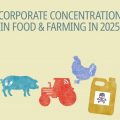
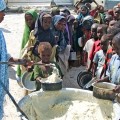 CORPORATE AGRIBUSINESS GIANTS SWIM IN WEALTH AS MORE POOR PEOPLE GO HUNGRY AMID THE BITING COVID PANDEMIC.
CORPORATE AGRIBUSINESS GIANTS SWIM IN WEALTH AS MORE POOR PEOPLE GO HUNGRY AMID THE BITING COVID PANDEMIC.
 A corporate cartel fertilises food inflation
A corporate cartel fertilises food inflation
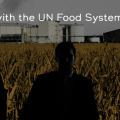 The United Nations Food Systems Summit is a corporate food summit —not a “people’s” food summit
The United Nations Food Systems Summit is a corporate food summit —not a “people’s” food summit
 Food inflation: The math doesn’t add up without factoring in corporate power
Food inflation: The math doesn’t add up without factoring in corporate power
SPECIAL REPORTS AND PROJECTS
Maasai demand Volkswagen pull out of carbon offset scheme on their lands
Published
3 months agoon
July 24, 2025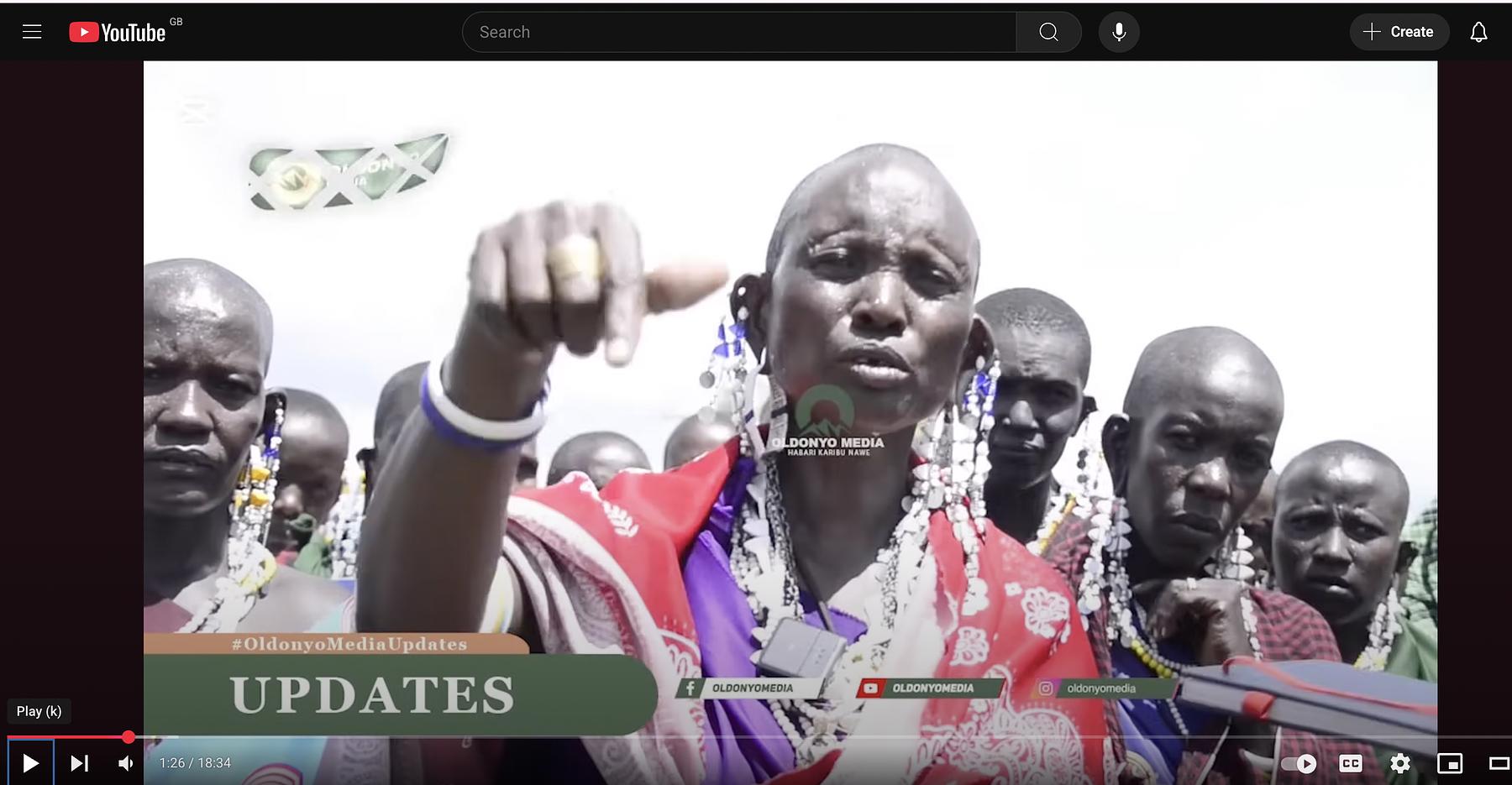
Maasai Indigenous people in Tanzania have called on Volkswagen (VW) to withdraw from a controversial carbon credits scheme which violates their rights and threatens to wreck their livelihoods.
In a statement, the Maasai International Solidarity Alliance (MISA) denounced the “loss of control or use” of vital Maasai grazing grounds, and accused VW of making “false and misleading claims” about Maasai participation in decision making about the project.
Many Maasai pastoralists have already been evicted from large parts of their grazing lands for national parks and game reserves, with highly lucrative tourist businesses operating in them. Now a major new carbon-credit generating project by Volkswagen ClimatePartner (VWCP) and US-based carbon offset company Soils for the Future Tanzania is taking control of large parts of their remaining lands, and threatening livelihoods by upending long-standing Maasai grazing practices.
The Maasai have not given their free, prior and informed consent for the project. They fear it will restrict their access to crucial refuge areas in times of drought, and threaten their food security.
Ngisha Sinyok, a Maasai community member from Eluai village, which is struggling to withdraw from the project, told Survival: “Our livestock is going to be depleted. We will end up not having a single cow.” Asked about VW’s involvement in the project, he replied, “It is not a solution to climate change. It is just a business for people to make money using our environment. It has nothing to do with climate change.”
Another Maasai man, who wished to remain anonymous for fear of reprisals, said: “They use their money to control us.” A third said: “Maasailand never had a price tag. In Maasailand, there is no privatization. Our land is communal.”
Survival International’s Director of Research and Advocacy, Fiona Watson, said today: “The carbon project that Volkswagen supports violates the Maasai’s rights and will be disastrous for their lives, all so the company can carry on polluting and greenwash its image. It takes away the Maasai’s control over their own lands and relies on the false and colonial assumption that they are destroying their lands — which is not supported by evidence.
“The Maasai have been grazing cattle on the plains of East Africa since time immemorial. They know the land and how to manage it better than carbon project developers seeking to make millions from their lands.”
VW’s investment in the project, whose official name is the “Longido and Monduli Rangelands Carbon Project”, is believed to run to several million dollars, and has contributed to corruption and tensions in northern Tanzania, according to MISA’s report on the project.
An adjacent project in southern Kenya, also run by Soils for the Future, is beset with similar problems, and has already sparked resistance from local communities.
Survival International’s Blood Carbon report revealed that the whole basis for these “soil carbon” projects is flawed, and unsupported by evidence. Survival documented similar problems with the highly controversial Northern Kenya Grasslands Carbon Project. That project suffered a blow in a Kenyan court and was suspended and put under review by Verra, the carbon credit verification agency, for an unprecedented second time.
Source: Survival International
Related posts:

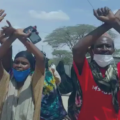 Kenya: Court halts flagship carbon offset project used by Meta, Netflix and British Airways over unlawfully acquiring community land without consent
Kenya: Court halts flagship carbon offset project used by Meta, Netflix and British Airways over unlawfully acquiring community land without consent
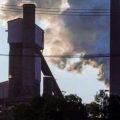 East Africa poised to monitor carbon emission
East Africa poised to monitor carbon emission
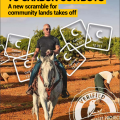 Carbon offset projects exacerbate land grabbing and undermine small farmers’ independence – GRAIN report
Carbon offset projects exacerbate land grabbing and undermine small farmers’ independence – GRAIN report
SPECIAL REPORTS AND PROJECTS
Seizing the Jubilee moment: Cancel the debt to unlock Africa’s clean energy future
Published
3 months agoon
July 12, 2025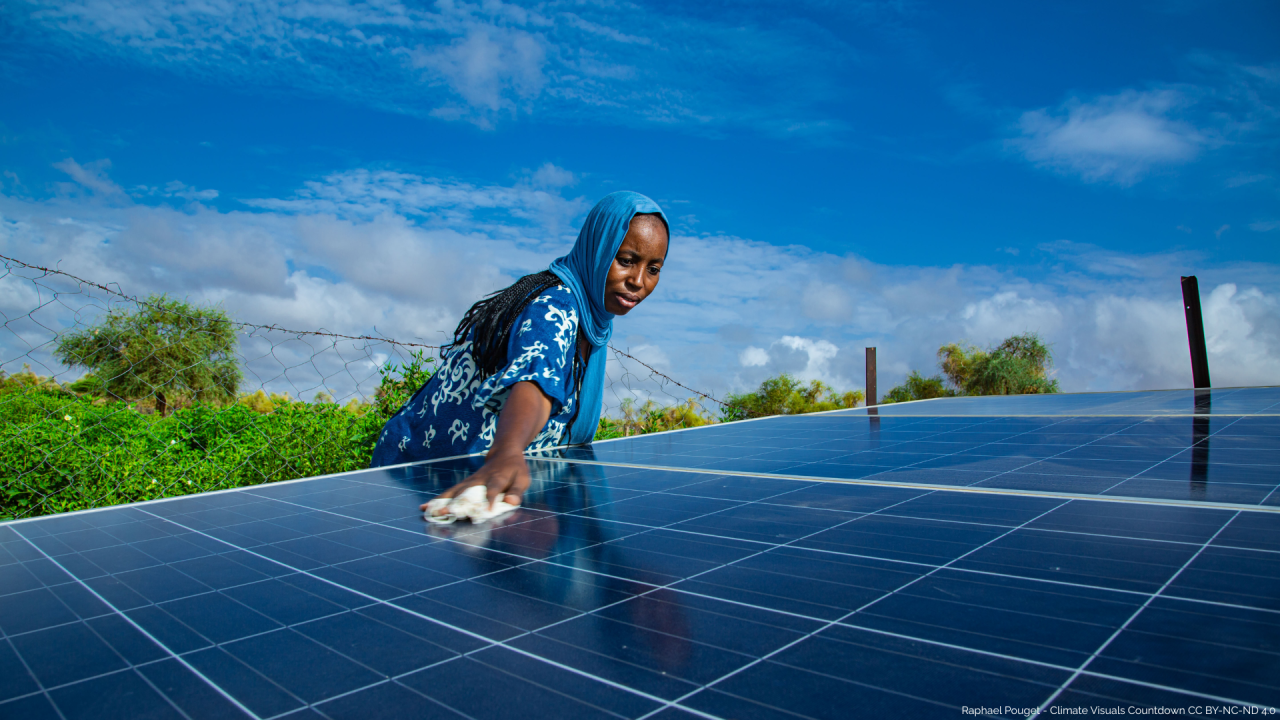
Africa has the resources and the vision for a just energy transition, but it is trapped in a financial system structured to take more than it gives. In this blog, we outline how debt burdens and climate impacts are holding the continent back, and looks at the role of institutions that shape the global financial order, like the World Bank, African Development Bank and IMF. As these institutions and governments meet in Seville for FfD4, we urge them to heed people’s calls for reform: cancel the debt, redistribute the wealth, and fund the just transition. — By Rajneesh Bhuee and Lola Allen
With 60% of the world’s best solar energy resources and 70% of the cobalt essential for electric vehicle batteries, the African continent has everything it needs to power its development and become a global reference point for sustainable energy production. That potential, however, remains largely untapped; Africa receives just 2% of global renewable energy investment. As the UNCTAD Secretary-General Rebeca Grynspan warns, too many countries are forced to “default on their development to avoid defaulting on their debt.”
The cost of servicing unsustainable debts, layered with new loan-based climate and development finance, leaves governments with little fiscal space to invest in clean energy, health or education. In 2022 alone, African countries spent more than $100 billion on debt servicing, over twice what they spent on health or education. Add to this the $90 billion lost annually to illicit financial flows, and the reality is stark: more money leaves the continent through financial leakages (also including unfair trade and extractive investment) than comes in through productive, equitable and development-oriented finance.
These are not isolated problems. They reflect a financial system that has been built to serve global markets rather than people. Between 2020 and 2025, four African countries defaulted on their external debts, that is, they failed to make scheduled repayments to creditors like the International Monetary Fund or bondholders, triggering fiscal crises and, in several cases, IMF interventions tied to austerity measures. Pope Francis’ Jubilee Report (2025) and hundreds of civil society groups argue that these defaults reflect the deeper crisis of unsustainable debt. Meanwhile, 24 more African countries are now in or near debt distress. None have successfully restructured their debts under the G20 Common Framework, a mechanism launched in 2020 to facilitate debt relief among public and private creditors. The Framework has been widely criticised for being slow, opaque and ineffective. According to Eurodad, without urgent systemic reforms, up to 47 Global South countries, home to over 1.1 billion people, face insolvency risks within five years if they attempt to meet climate and development goals.
How debt undermines the just energy transition
Debt has become both a driver and a symptom of climate injustice. Countries that did the least to cause the climate crisis now pay the highest price, twice over. First, they suffer the impacts. Second, they must borrow to rebuild.
This is happening just as concessional finance disappears. The US has withdrawn from the African Development Fund’s concessional window (worth $550m), yet maintains influence over private-sector lending. It has also opted out of the UN Financing for Development Conference (FfD4), a historic opportunity to confront the injustice of our financial system. Meanwhile, European governments, though now celebrating themselves as defenders of multilateralism, played a key role in weakening the outcome of FfD4, slashing aid budgets, redirecting funds toward militarisation, and systematically blocking proposals for a UN-led sovereign debt workout mechanism. With rising insecurity and geopolitical tensions, these actions send a troubling signal: at a moment when global cooperation is urgently needed, many Global North countries are stepping back from efforts to fix the very system that is preventing climate justice and clean energy for much of the Global South.
A role for the AfDB?
The African Development Bank (AfDB), under incoming president Sidi Ould Tah , has made progressive commitments of $10 billion to climate-resilient infrastructure and $4 billion to clean cooking. Between 2022 and 2024, one in five (20%) of its energy dollars were grants, far exceeding The World Bank ‘s 10% and the Asian Development Bank (ADB) ‘s 3.8%. The AfDB has also backed systemic reform: for example, calling for Special Drawing Rights (SDR) redistribution, launching an African Financial Stability Mechanism that could save up to $20 billion in debt servicing, and consistently advocating for fairer lending terms.
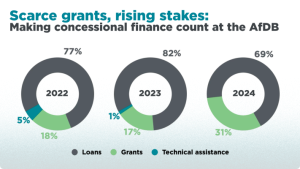
Yet, even progressive leadership struggles within a broken system. Recourse’s recent research shows that AfDB energy finance dropped 67% in 2024, from $992.7 million to just $329.6 million. Of this, a staggering 73% went to large-scale infrastructure like mega hydro dams and export-focused transmission lines, ‘false solutions’ that bypass the energy-poor and displace communities. Meanwhile, support for locally-appropriate, decentralised renewable energy systems such as mini-grids, solar appliances, and clean cookstoves plummeted by over 90%, from $694.5 million to just $61 million, with only five of 13 projects directly addressing energy access in 2024.
Africa received just 2.8% of global climate finance in 2021–22, and what is labelled as “climate finance” is often little more than a Trojan horse: resource-backed loans, debt-for-nature swaps, and blended finance instruments that shift risk to the public while offering little real benefit to local communities. These mechanisms, promoted as “innovative” or “green”, often entrench financial dependency and fail to deliver meaningful change for energy-poor or climate-vulnerable groups.
Meanwhile, initiatives that could build green industry and renewable capacity across Africa are falling short in both scale and speed. Flagship projects, such as the EU’s Global Gateway, have failed to drive green industrialisation in Africa, and carbon markets continue to delay real emissions reductions, subsidise fossil fuel interests, and entrench elite control over land and resources.
Mission 300: Ambition or another missed opportunity?
In this constrained context, the AfDB and World Bank launched Mission 300, an ambitious plan to connect 300 million Africans to electricity by 2030. Pragmatic goals like electrification are crucial, but the story beneath the surface of Mission 300 raises concern. Far from serving households, many projects under the initiative appear more aligned with export markets and large-scale energy users, echoing decades of infrastructure that bypasses those most in need.
Mission 300 can still be transformative, but only if it centres people, not profits. Energy access must begin with those who need it most: women and youth, especially in rural communities. Across Africa, many women cook over open fires, walk hours to gather fuel, and care for families in homes without light or clean air. This is not just an inconvenience, it is structural violence and policy failure.
Yet most energy finance still flows to centralised grids, mega-projects, and sometimes fossil gas (misleadingly called a “transition fuel”). These do little to address energy poverty. Locally appropriate decentralised renewable energy solutions, solar-powered appliances, clean cookstoves, and mini-grids can deliver faster, cheaper, and more equitable impact. Mission 300 must invest in such solutions, without adding to existing debt problems. It should support national policy design, for example, by ensuring that energy policy is responsive to women’s needs, making use of gender-disaggregated data and community consultation.
The Jubilee: A year for action
In a year already marked as a Jubilee moment, African leaders have demanded reform: including a sovereign debt workout mechanism and a UN Tax Convention to end illicit financial flows. Yet as AFRODAD has documented, these demands were blocked at the FfD4 negotiations by wealthy nations—notably the EU and UK—even as climate impacts grow and fiscal space shrinks.
This is not just about finance. It is about reclaiming sovereignty. The incoming AfDB president and all the multilateral development banks face a choice: continue financing extractive, large-scale projects that serve foreign interests, or invest in decentralised, gender-responsive, pro-people solutions that shift power and ownership.
Africa has the resources. What it needs is fiscal space, public-led finance, and global rules that prioritise people and planet over profit. The Jubilee call is clear: cancel the debt, redistribute the wealth, and fund the just transition.
Source: Recourse through LinkedIn Account Recourse.
Related posts:
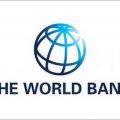
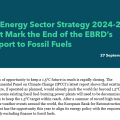 Statement: The Energy Sector Strategy 2024–2028 Must Mark the End of the EBRD’s Support to Fossil Fuels
Statement: The Energy Sector Strategy 2024–2028 Must Mark the End of the EBRD’s Support to Fossil Fuels
 African Development Bank decides not to fund Kenya coal project
African Development Bank decides not to fund Kenya coal project
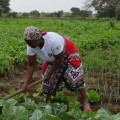 Africa must unlock the power of its women to save climate change
Africa must unlock the power of its women to save climate change
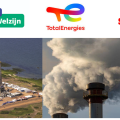 PFZW scraps funding from Total and others for failure to transition into a cleaner energy mix.
PFZW scraps funding from Total and others for failure to transition into a cleaner energy mix.

12 anti-Eacop activists decry delayed justice after spending 100 days on remand

‘They Stole Our Ancestors’: Ministry of Water, RDCs Accused of Land Grabbing and Grave Exhumation in Kanungu

Failed US-Brokered “Peace” Deal Was Never About Peace in DRC

Know Your Land rights and environmental protection laws: a case of a refreshed radio program transferring legal knowledge to local and indigenous communities to protect their land and the environment at Witness Radio.

Uganda is on a mission to plant over 40 million trees by October 3, 2025, a crucial step in combating the alarming decline in its forest cover.

The 4th African Forum on Business and Human Rights: The rapidly escalating investment in Africa is urgently eroding environmental conservation and disregarding the dignity, the land, and human rights of the African people.

Oil palm tree growing in Uganda: The National Oil Palm Project is threatening to evict hundreds of smallholder farmers to expand its operations.

The 4th African Forum on Business and Human Rights: The African continent is lagging, with only a few member states having adopted the National Action Plan (NAP) on Business and Human Rights.

Innovative Finance from Canada projects positive impact on local communities.
Over 5000 Indigenous Communities evicted in Kiryandongo District
Petition To Land Inquiry Commission Over Human Rights In Kiryandongo District
Invisible victims of Uganda Land Grabs
Resource Center
- REPARATORY AND CLIMATE JUSTICE MUST BE AT THE CORE OF COP30, SAY GLOBAL LEADERS AND MOVEMENTS
- LAND GRABS AT GUNPOINT REPORT IN KIRYANDONGO DISTRICT
- THOSE OIL LIARS! THEY DESTROYED MY BUSINESS!
- RESEARCH BRIEF -TOURISM POTENTIAL OF GREATER MASAKA -MARCH 2025
- The Mouila Declaration of the Informal Alliance against the Expansion of Industrial Monocultures
- FORCED LAND EVICTIONS IN UGANDA TRENDS RIGHTS OF DEFENDERS IMPACT AND CALL FOR ACTION
- 12 KEY DEMANDS FROM CSOS TO WORLD LEADERS AT THE OPENING OF COP16 IN SAUDI ARABIA
- PRESENDIANTIAL DIRECTIVE BANNING ALL LAND EVICTIONS IN UGANDA
Legal Framework
READ BY CATEGORY
Newsletter
Trending
-
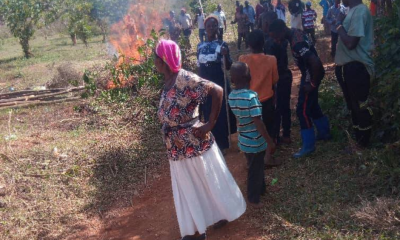
 MEDIA FOR CHANGE NETWORK1 week ago
MEDIA FOR CHANGE NETWORK1 week agoOil palm tree growing in Uganda: The National Oil Palm Project is threatening to evict hundreds of smallholder farmers to expand its operations.
-
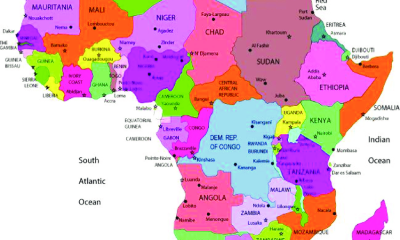
 MEDIA FOR CHANGE NETWORK2 weeks ago
MEDIA FOR CHANGE NETWORK2 weeks agoThe 4th African Forum on Business and Human Rights: The African continent is lagging, with only a few member states having adopted the National Action Plan (NAP) on Business and Human Rights.
-
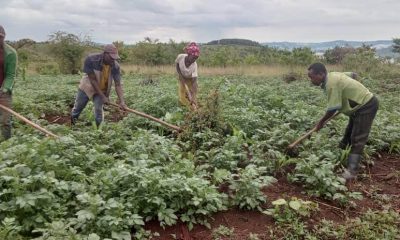
 MEDIA FOR CHANGE NETWORK2 weeks ago
MEDIA FOR CHANGE NETWORK2 weeks agoThe EAC Seed and Plant Varieties Bill 2025 targets organic seeds, aiming to replace them with modified seeds, say smallholder farmers.
-

 MEDIA FOR CHANGE NETWORK1 week ago
MEDIA FOR CHANGE NETWORK1 week agoNew! The Eyes on a Just Energy Transition in Africa Program is now live on Witness Radio.
-

 MEDIA FOR CHANGE NETWORK3 days ago
MEDIA FOR CHANGE NETWORK3 days agoKnow Your Land rights and environmental protection laws: a case of a refreshed radio program transferring legal knowledge to local and indigenous communities to protect their land and the environment at Witness Radio.
-
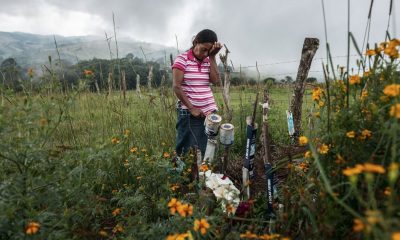
 NGO WORK2 weeks ago
NGO WORK2 weeks agoDocumenting killings and disappearances of land and environmental defenders
-
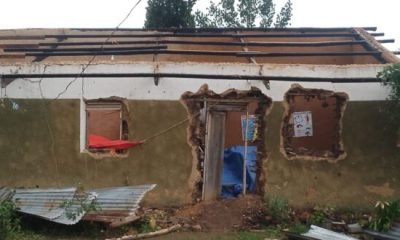
 MEDIA FOR CHANGE NETWORK1 week ago
MEDIA FOR CHANGE NETWORK1 week agoRDCs, Local Leaders Accused of Grabbing 70-Acre Ancestral Land
-
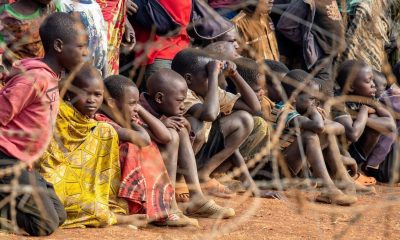
 NGO WORK2 days ago
NGO WORK2 days agoFailed US-Brokered “Peace” Deal Was Never About Peace in DRC
